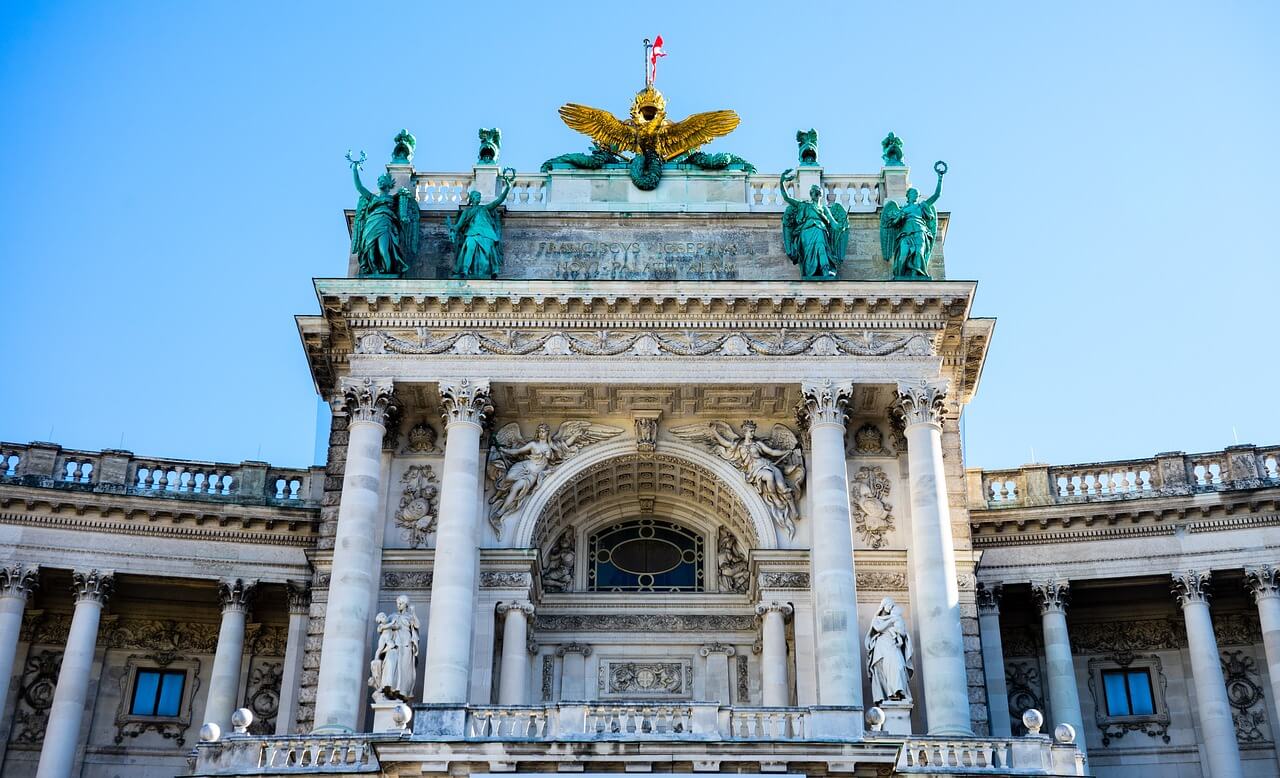This website uses cookies so that we can provide you with the best user experience possible. Cookie information is stored in your browser and performs functions such as recognising you when you return to our website and helping our team to understand which sections of the website you find most interesting and useful.
The Imperial Palace Vienna



The EHL Site
Initiated in 1275, the Imperial Palace is a complex of buildings and gardens which used to serve as the residence of the Habsburgs, a ruling family of large parts of Europe during some 700 years. The Habsburg Empire was a multi-ethnic and a multi- religious empire that had a strong political, administrative, social, and economic impact on territories that include or are part of today's Austria, Hungary, Czech
Republic, Poland, Slovenia, etc. Today, the Imperial Palace is home to the seat of the Austrian Federal President, five world-class museum organisations as well as other cultural institutions.
European dimension
The Imperial Palace Vienna has a European Significance, it stands for Linguistic and Cultural Diversity. From here a multi-ethnic state was governed. Many decisions made here still have an impact in many countries today! The Emperors had developed an evolved status of citizenship, including religious freedom & access to education.
There was Ethnic and Religious Diversity. For instance:
- The Patent of Tolerance by Joseph II (Roman-German Emperor from 1780-1790) gives citizen rights to ethnic groups.
- The Congress of Vienna (1814/15) – Meeting and dancing for the reorganisation of Europe
Long existence of cultural institutions (museums) in the area, like Kunsthistorisches Museum Vienna (opened in 1891) and Natural History Museum Vienna (opened in
1889) demonstrate the history.
The organization
Burghauptmannschaft Österreich (BHOe) takes care about the architectural heritage of the Republic of Austria.
Burghauptmannschaft Österreich is a subordinated office of the Federal Ministry of Labour and Economy and is responsible for the maintenance and administration of historic objects and properties of Austria which are part of the country’s cultural and historic heritage. This comprises, besides the Imperial Palace Vienna, the government building at Stubenring in Vienna and several palaces in Vienna as well as the Imperial Palace Innsbruck and Ambras Castle, not to mention the former concentration camp at Mauthausen.
Burghauptmannschaft Österreich ensures that Austria’s cultural heritage is conserved in a sustainable way. Its fields of activities, thus, include “Sustainable Conservation of the Cultural Heritage of the Republic of Austria”, “Sustainable Management and Use of the Cultural Heritage of the Republic of Austria” and “Sustainable Culture and Tourism Operations for the Cultural Heritage of the Republic of Austria”.
